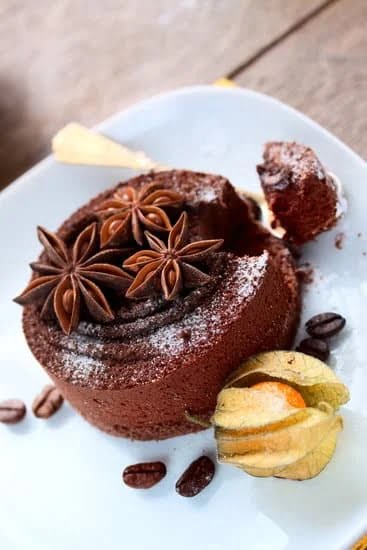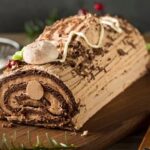Cemetery cake decorations have become a rising trend in the world of baking and confectionery. These unique embellishments take inspiration from the somber yet intriguing aesthetics of cemetery elements, bringing a touch of macabre charm to cakes and other sweet treats. From tombstones and gravestones to skeletons and cobwebs, cemetery cake decorations offer a distinctive twist to traditional cake designs.
As more bakers and cake enthusiasts push the boundaries of creativity, they are exploring unconventional themes for their confections. Incorporating cemetery elements into cake decorations allows them to experiment with alternative styles that evoke mystery, gothic beauty, or even a playful sense of whimsy.
In this article, we will delve into the fascinating world of cemetery cake decorations. We will explore their historical origins, uncover the symbolic meanings behind common motifs found on these edible art pieces, and showcase various types and designs available in the market.
Whether you are seeking inspiration for your next baking project or simply intrigued by this unique trend, read on to learn more about cemetery cake decorations and how you can embrace their aesthetic in your own culinary creations.
Historical Origins of Cemetery Cake Decorations
Cemetery cake decorations have a fascinating history that spans across cultures and centuries. The practice of incorporating cemetery elements into cake designs can be traced back to ancient times, where it was believed that these decorations brought good fortune and protection. This section will explore the historical origins of cemetery cake decorations and highlight the cultural and historical influences that have shaped their development.
In ancient Egypt, cakes adorned with miniature tombs and figurines were often placed in tombs to provide sustenance for the deceased in the afterlife. These cakes were not only practical offerings but also held symbolic meaning, representing a wish for eternal life and blessings for the departed. Similarly, in ancient Greece and Rome, funeral cakes were made with common materials found in tombs such as wheat flour, honey, and spices as a way to honor the deceased’s memory.
During the Victorian era, when mourning rituals reached their peak, cemetery cake decorations took on a more elaborate form. These edible creations were often designed to resemble tombstones, hearse carriages or even entire miniature graveyards. They were displayed at funerals and memorial gatherings as both a decorative element and a symbol of remembrance. The Victorian era saw an increased interest in mourning traditions and symbolism, which heavily influenced the design of cemetery-themed cakes.
Cemetery cake decorations continue to evolve today, drawing inspiration from various cultural traditions and artistic styles. They have become particularly popular among those embracing Gothic aesthetics or hosting Halloween parties. By exploring the intriguing historical origins of cemetery cake decorations, we gain a deeper appreciation for the unique symbolism they hold and understand how they have become an integral part of our modern baking practices.
Symbolism and Meaning Behind Cemetery Cake Decorations
Cemetery cake decorations may seem like an unconventional choice for many, but they carry deep symbolism and meaning that can create a unique and emotional impact. These decorations often incorporate common motifs found in cemeteries, such as tombstones, gravestones, skulls, crosses, and other elements associated with death and remembrance. Understanding the symbolism behind these decorations can shed light on why they have become a popular trend in cake designs.
One of the primary reasons cemetery cake decorations have gained popularity is their ability to evoke emotion and capture the essence of life’s fleeting nature. By incorporating elements like tombstones or skulls, these decorations remind us of our mortality and serve as powerful reminders to appreciate each moment we have. They can also be seen as a celebration of life’s journey, acknowledging that death is a natural part of the cycle.
Additionally, cemetery cake decorations can hold personal significance for individuals who are honoring lost loved ones or celebrating special occasions with a gothic aesthetic. These designs allow people to express their emotions or pay tribute to those who have passed away. By incorporating cemetery motifs into cakes, individuals can create a tangible representation of memories and emotions associated with those who are no longer physically present.
| Symbol | Meaning |
|---|---|
| Tombstone/Gravestone | Remembrance; acknowledgement of mortality |
| Skull | Memento mori; embracing life’s transient nature |
| Cross | Religious symbol; faith in the afterlife |
Types of Cemetery Cake Decorations
Cemetery cake decorations come in a variety of types, styles, and designs. They are a unique and creative way to add an element of the macabre to your cake creations. Whether you’re planning for a Halloween party or want to add a touch of gothic elegance to a special occasion, incorporating cemetery cake decorations can take your baking to the next level.
There are several popular types of cemetery cake decorations available on the market. One common option is tombstone-shaped cake toppers. These can be made from fondant or edible paper and are often customized with names and dates. Tombstone cake decorations can range from simple and minimalistic designs to more intricate and detailed ones.
Another type of cemetery cake decoration is miniature gravestones or burial plots made from chocolate or cookie dough. These can be placed around the edge of the cake or arranged in a graveyard scene on top of the dessert. Some bakers even create realistic-looking skeletons emerging from the ground as an eerie centerpiece.
For those who prefer a more whimsical approach, there are also cute and cartoon-like ghost, skeleton, and skull-shaped decorations available. These add a playful touch to the overall design while still incorporating elements commonly associated with cemeteries.
| Type | Description |
|---|---|
| Tombstone Cake Toppers | Fondant or edible paper cutouts shaped like tombstones with customized details. |
| Miniature Gravestones | Small gravestones made from chocolate or cookie dough that can be placed around the cake. |
| Ghosts, Skeletons, and Skulls | Cute and cartoon-like decorations in the shape of ghosts, skeletons, or skulls that add a playful touch to the cake. |
These are just a few examples of the types of cemetery cake decorations available. Whether you choose to go with a traditional tombstone design or opt for something more whimsical, these decorations are sure to impress your guests and add a unique aesthetic to your cakes. So, get creative and have fun experimenting with different types of cemetery cake decorations for your next baking project.
DIY Cemetery Cake Decorations
Creating your own cemetery cake decorations can be a fun and rewarding DIY project. Not only will it allow you to customize your cakes with unique and personalized touches, but it can also save you money compared to purchasing pre-made decorations. Here is a step-by-step guide to help you create your own cemetery-themed cake decorations at home:
- Choose Your Materials: Start by gathering the necessary materials for your project. This may include fondant or gum paste, food coloring in various shades (such as black, gray, and brown), edible glue or water to adhere pieces together, sculpting tools or toothpicks for shaping and detailing, and a rolling pin for flattening the fondant.
- Plan the Design: Before you start working with the fondant or gum paste, it’s helpful to have a clear idea of the design you want to create. Consider elements such as tombstones, gravestones, skeletons, skulls, creepy trees, or haunted houses. Sketch out your design on paper or create a digital mock-up using design software.
- Sculpt and Shape: Take small amounts of fondant or gum paste and begin sculpting your desired shapes using your hands or sculpting tools. Remember to work slowly and carefully to achieve the desired level of detail. For tombstones or gravestones, flatten a piece of gray fondant into a rectangular shape and use a toothpick or sculpting tool to add textures such as cracks or engravings.
- Add Details: Once you have shaped the main components of your cemetery decorations, it’s time to add details and accents using different colors of fondant or food coloring. For example, add black borders around tombstones and use white fondant to create intricate skull designs.
- Allow to Dry: After completing each decoration piece, set them aside on wax paper or parchment paper to dry completely before placing them on your cake. This will help them hold their shape and prevent them from losing their details.
- Arrange on the Cake: Once your decorations are dry, carefully arrange them on your cake according to your design plan. Use edible glue or a small amount of water to adhere the decorations securely to the cake surface.
By following these steps, you can create unique and personalized cemetery cake decorations that are sure to impress. Remember to allow yourself plenty of time for the drying process and let your creativity shine through.
Creative Ways to Incorporate Cemetery Cake Decorations
Halloween-themed Cakes
One of the most popular occasions to incorporate cemetery cake decorations is during Halloween. The spooky ambiance of the holiday perfectly matches the eerie elements found in cemeteries. Consider decorating your cake with tombstones, skeletal hands, or even a mini graveyard made from edible materials. To enhance the Halloween theme further, you can use black frosting or add creepy-looking creatures like bats, spiders, or ghosts.
Gothic-themed Parties
For those who appreciate dark aesthetics and enjoy gothic-inspired events, incorporating cemetery cake decorations can add a unique touch. Opt for intricate designs featuring ornate gravestones or intricate wrought iron fences. Use deep colors such as black, burgundy, deep purple, or dark green for your icing and embellishments to create an elegant yet mysterious ambiance.
Funerals and Memorial Gatherings
While it may seem unconventional at first, incorporating cemetery cake decorations into funerals and memorial gatherings can be a way to commemorate the lives of loved ones in a meaningful way. Decorate the cake with symbols that hold special significance to the deceased individual and their family. This could include personalized gravestone-shaped toppers with their name and important dates, miniature flowers reminiscent of funeral arrangements, or delicate angel figurines.
When incorporating cemetery elements into cakes for somber occasions like funerals and memorial gatherings, it is essential to consider the sensitivities of those attending the event. Ensure that your design strikes a balance between tasteful remembrance and celebration of life.
By thinking outside the box when it comes to incorporating cemetery cake decorations into different occasions, you can create visually striking cakes that leave a lasting impression on guests. Regardless of whether it’s for Halloween festivities, gothic-themed parties, or more solemn events such as funerals or memorial gatherings, there are endless possibilities for creating unique and memorable cake designs using cemetery-inspired elements.
Where to Find and Purchase Cemetery Cake Decorations
Online Retailers
When it comes to finding and purchasing cemetery cake decorations, online retailers offer a wide range of options to choose from. Websites such as CemeteryCakes.com and GraveyardGoodies.com specialize in providing customers with a variety of cemetery-themed cake decorations.
These online stores have curated collections that feature tombstone-shaped cake toppers, miniature replicas of graveyards and skeletons, edible coffin-shaped chocolates, and more. Customers can conveniently browse through the different categories and select the decorations that best suit their needs.
Specialty Cake Supply Stores
For those who prefer an in-person shopping experience, specialty cake supply stores often carry cemetery cake decorations along with other baking accessories. These stores cater specifically to bakers and cake decorators, offering a plethora of unique items to enhance their creations.
From edible graveyard scene kits to silicone molds for creating tombstone shapes, these specialty stores are a treasure trove for anyone looking for cemetery-themed cake decorations. Additionally, store staff members are often experienced bakers themselves and can provide valuable guidance on which products to choose.
Arts and Crafts Stores
Another surprising source for cemetery cake decorations is arts and crafts stores. With the increasing popularity of DIY projects and creative hobbies, many arts and crafts retailers now stock a variety of materials that can be repurposed for baking purposes.
Explore the seasonal sections or the Halloween-themed aisles where you may find items like miniature gravestones, spooky figurines, or paper cutouts featuring traditional cemetery motifs. While not designed explicitly for cakes, these items can be easily adapted to create unique and eye-catching cake decorations.
Ultimately, whether you prefer shopping online or browsing through physical stores, there are numerous options available for finding and purchasing cemetery cake decorations. By exploring these different avenues, bakers can discover a multitude of imaginative and artistic ways to incorporate these unique elements into their next cake design.
Frequently Asked Questions About Cemetery Cake Decorations
As cemetery cake decorations gain popularity, it’s natural that many people have questions about these unique and intriguing cake designs. Here, we aim to address some of the most frequently asked questions about cemetery cake decorations and provide guidance for those curious to explore this trend.
- What are cemetery cake decorations?
- Are cemetery cake decorations only suitable for Halloween or gothic-themed parties?
- Where can I find and purchase cemetery cake decorations?
- Can I make my own cemetery cake decorations?
Cemetery cake decorations are a type of edible design element used to adorn cakes or other baked goods. These decorations often feature motifs commonly associated with cemeteries, gravesites, or tombstones. They can be made from various materials such as fondant, marzipan, chocolate, or sugar paste.
While cemetery cake decorations can certainly add an eerie touch to Halloween celebrations or gothic-themed parties, they are not limited to these occasions. The symbolism behind these motifs can evoke a sense of nostalgia, remembrance, and even celebration of life. As such, cemetery cake decorations can be incorporated into a variety of events including memorial gatherings or even birthday parties where the deceased was remembered fondly.
There are several reliable online and physical stores specializing in bakery supplies where you can find a wide range of cemetery cake decorations. Online platforms such as Etsy offer handmade options while larger retailers like Amazon may provide more variety. It’s also worth checking your local baking supply stores for specific items you may need.
Absolutely. Making your own cemetery cake decorations can be a fun and rewarding experience. There are numerous tutorials available online that provide step-by-step guides on creating various types of cemetery motifs using different materials such as fondant or sugar paste.
Whether you choose to purchase ready-made cemetery cake decorations or get creative with DIY projects, the key is to embrace the unique aesthetic that these designs bring to your baking creations. With the rising popularity of cemetery cake decorations, there has never been a better time to explore this fascinating trend and add an artistic twist to your next baking project.
Conclusion
In conclusion, cemetery cake decorations offer a unique and captivating aesthetic that can elevate any baking project. Throughout this article, we have explored the origins, symbolism, types, DIY methods, and creative uses of cemetery cake decorations. We have also provided recommendations on where to find these decorations and addressed common questions and concerns.
Cemetery cake decorations have a rich historical background influenced by various cultures and time periods. From ancient burial rituals to Gothic architecture, these elements bring a sense of mystery and intrigue to cake designs. The symbolism behind cemetery motifs adds an emotional depth to the creations, making them not only visually appealing but also meaningful.
For those with a knack for DIY projects, making your own cemetery cake decorations can be a rewarding experience. Our step-by-step guide has provided all the necessary materials and techniques you need to create your own unique designs. By exploring different ways to incorporate these decorations into various occasions, such as Halloween or Gothic-themed parties, you can truly showcase your creativity and amaze your guests.
Whether you choose to purchase ready-made cemetery cake decorations or make them yourself, there is a wide range of options available in both physical stores and online retailers. It is essential to do some research before making a purchase to ensure quality and fair pricing. Customer reviews can provide valuable insights into the reliability of the retailer.
Frequently Asked Questions
What are the 5 kinds of cake decorating?
The five kinds of cake decorating include buttercream, fondant, royal icing, ganache, and marzipan. Buttercream is a versatile frosting made with butter and sugar that can be easily piped onto cakes in different shapes or designs. Fondant is a smooth and pliable icing made from sugar, water, and gelatin that can be rolled out to cover cakes for a flawless finish.
Royal icing is a hard white icing made from egg whites and powdered sugar which can be used to create intricate designs like borders and flowers on cakes. Ganache is a rich mixture of chocolate and cream that can be poured over cakes or used as a filling or frosting. Lastly, marzipan is a sweet almond paste that can be shaped into various decorations like fruits or figures to adorn cakes.
What is writing on cake called?
Writing on a cake is commonly known as piping. Piping involves using a pastry bag fitted with a small round tip to create letters, words, or decorative patterns on the surface of the cake with frosting or icing.
This technique requires steady hand control and practice to achieve neat and legible results. Piping can be done using various types of frostings such as buttercream or royal icing, depending on the desired effect.
How to decorate a cake without tools?
It is possible to decorate a cake without any specialized tools by using various creative techniques and everyday kitchen items. For example, you can use a spoon or spatula to spread frosting in smooth layers across the cake’s surface instead of using an offset spatula. Additionally, you can use common household objects like toothpicks or wooden skewers to create textured patterns or designs in the frosting by dragging them lightly across the surface.
Alternatively, you could also try making simple stencils out of parchment paper or plastic sheets to create shapes or patterns on top of the cake using powdered sugar or cocoa powder dusted through the stencil. Being resourceful with what you have available allows for unique and personal touches, even without specialized tools.

Welcome to our cake decorating blog! My name is Destiny Flores, and I am the proud owner of a cake decorating business named Cake Karma. Our mission is to provide delicious, beautiful cakes for all occasions. We specialize in creating custom cakes that are tailored specifically to each customer’s individual needs and tastes.





